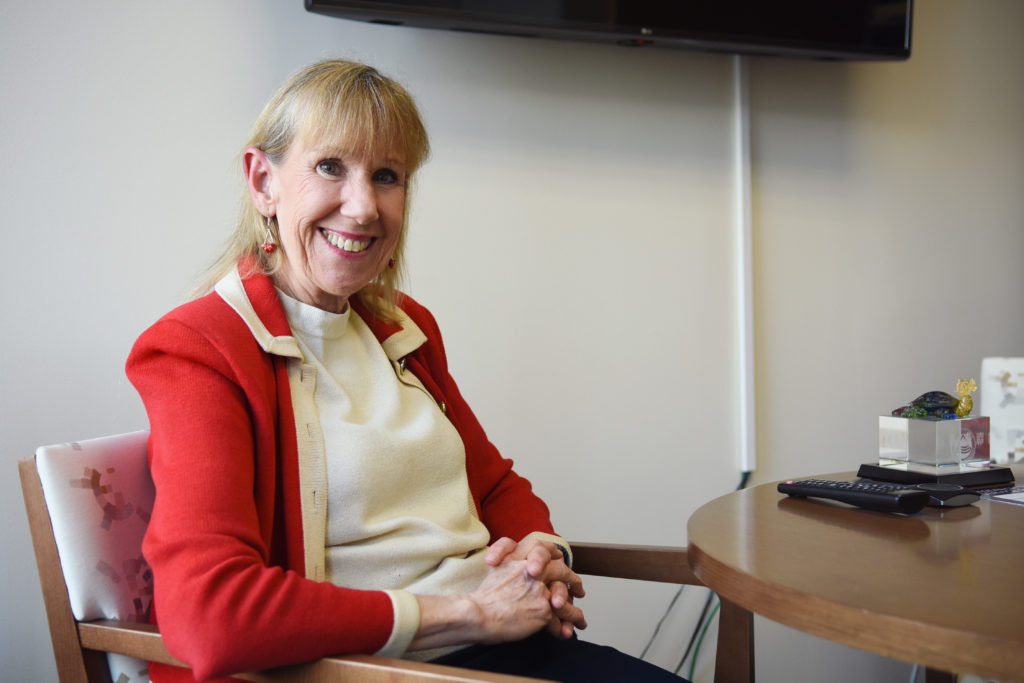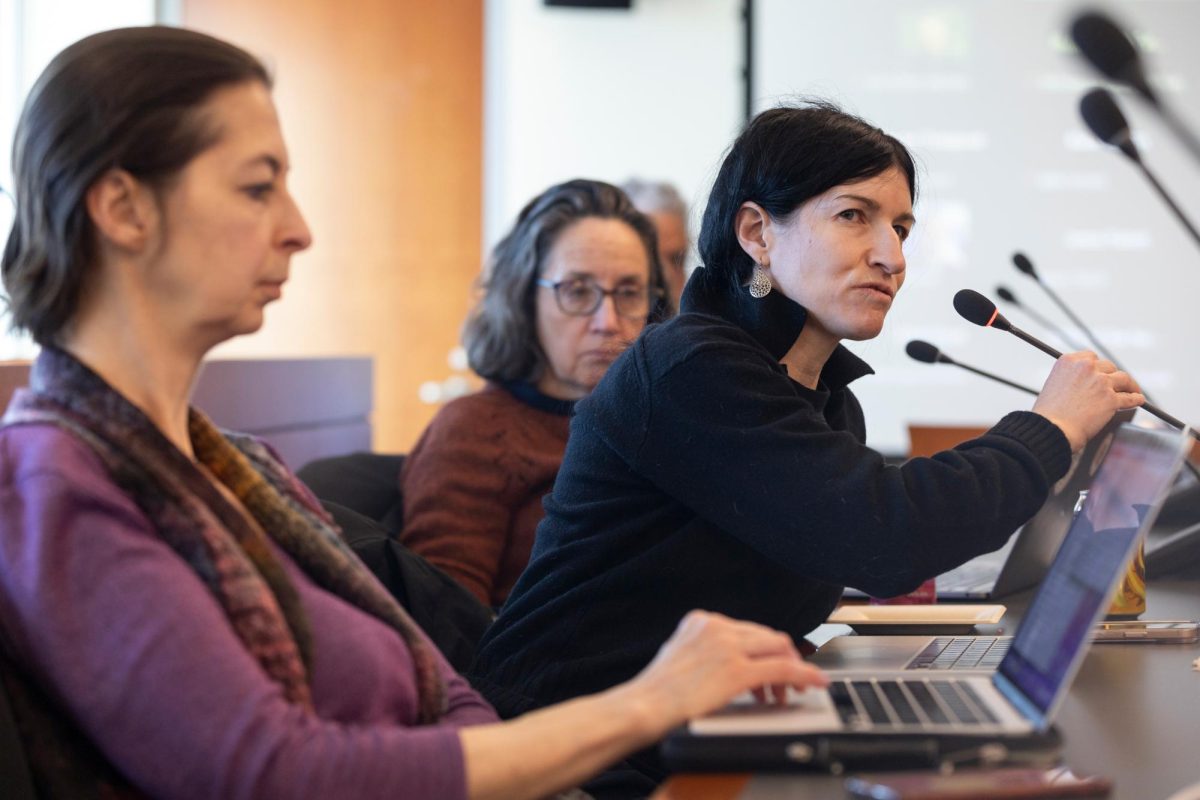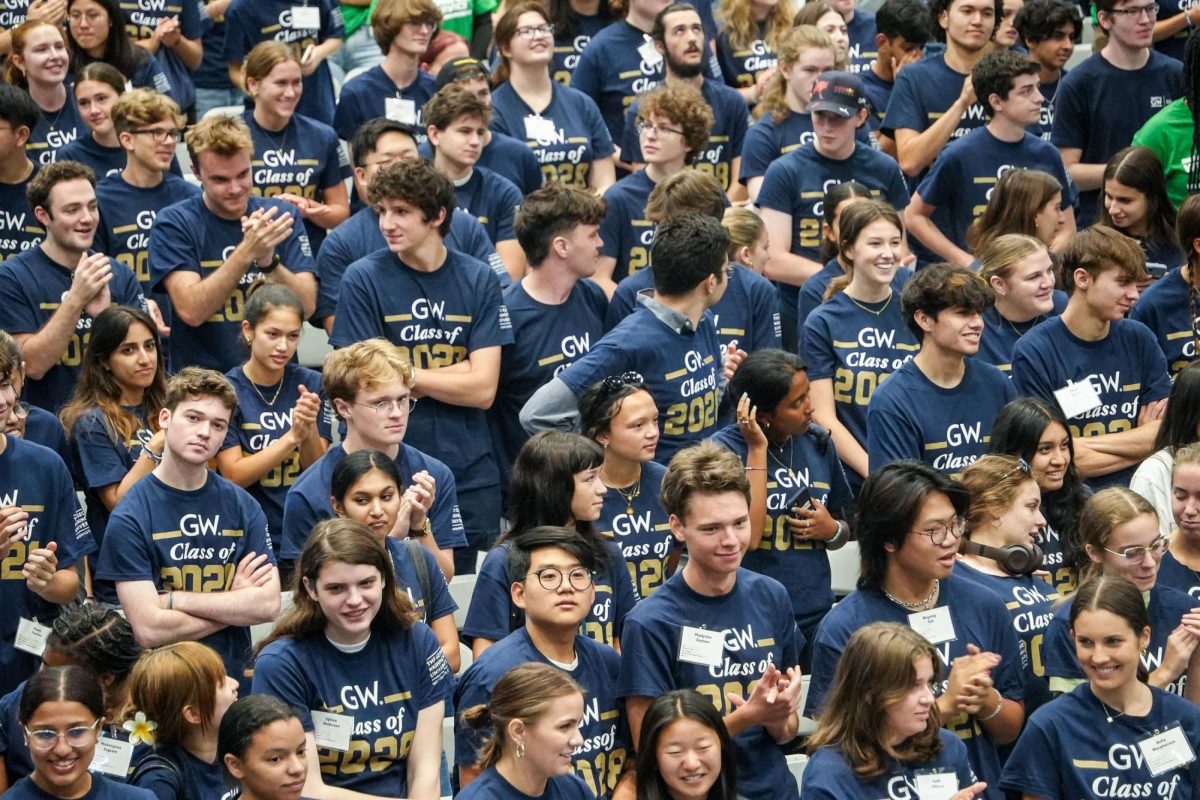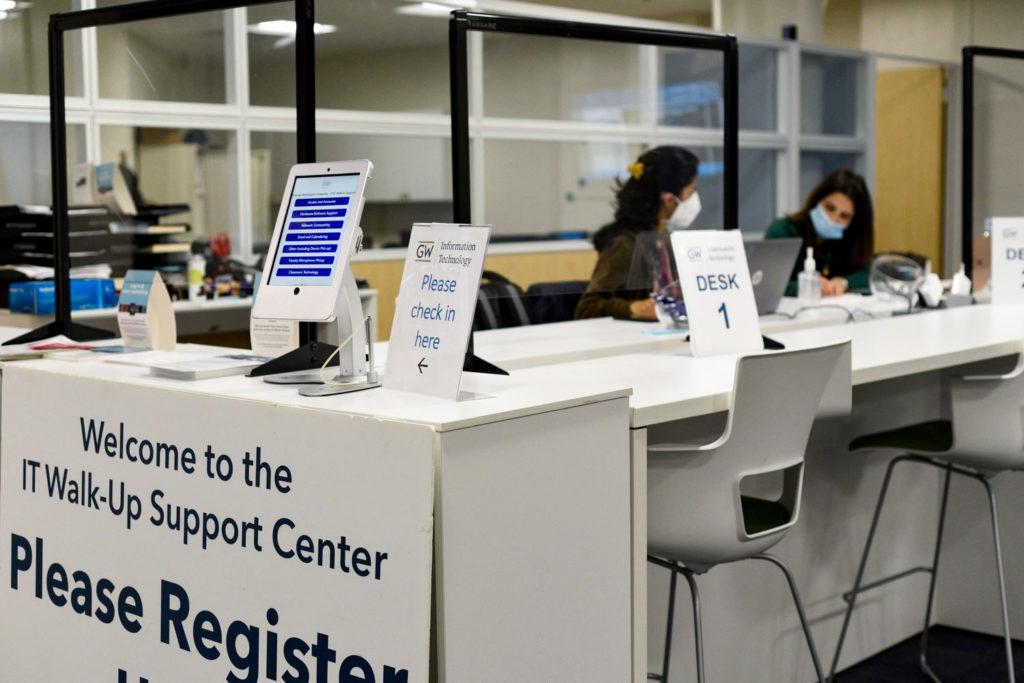Five weeks into the instructional continuity period, technology support staff said they have successfully supported faculty and students through the unexpected crisis.
Officials said they have bolstered GW’s efforts to move administrative and academic operations to online learning with live chats, remote desktop support and a four-fold increase in faculty workshops to address technology issues and ensure students and faculty have access to the software they need. GW Information Technology and Libraries and Academic Innovation staff said planning ahead of time enabled their departments to assist the University in moving operations virtually.
“While no one could have expected the impact COVID-19 made across higher education, GW IT had prepared business continuity plans for possible situations which would require remote work and online instruction,” Chief Information Officer Loretta Early said in an email. “Teams were able to leverage these plans to make the sudden transition as streamlined as possible.”
IT staff experienced a slight increase in support requests during the beginning of the instructional continuity period, at about 1,800 incident tickets processed from mid-March to mid-April, and the most significant increase in users accessing University self-help articles, Early said.
She said that in the same period, the number of views on University self-help articles hosted on the IT department’s website, which include information on topics like using Blackboard Collaborate and logging into Adobe Creative Cloud, were accessed nearly 14,000 times over the course of four weeks, compared to 3,500 in a similar timeframe normally.
Early said her department’s COVID-19 IT Task Force, which launched in March with IT leadership from across GW’s schools and departments, have addressed the “most common technology obstacles” raised by remote learning.
“Teams were able to ensure continuity of operations and business processes even during a global crisis which is not an easy task,” she said. “It is through the focused efforts of crisis planning, strategic technology investments and ongoing collaboration across diverse teams that we can remain such a strong community during this historic time.”
Dean of Libraries and Academic Innovation Geneva Henry said her department offered more than 50 workshops that trained 800 instructors in online teaching skills and tools since March 9 – four times the number of workshops usually held in this time period. She said all available library, Academic Commons and Academic Technologies staff members were prepared to support faculty during the transition to online classes.
“While the library buildings may be physically closed, services including personal assistance and consultation, workshops, tutoring, access to specialized software and much more remain available during GW’s virtual learning period,” Henry said.
Libraries and Academic Innovation has also received more than 950 support requests since online learning began on March 23 – a 180 percent increase relative to requests received during the fall semester, Henry said.
Henry said the Libraries and Academic Innovation team followed a plan developed last year aimed at continuing instruction in the case of weather closures, which included plans for library staff to work remotely.
“Although that planning was done mostly with weather closures in mind, it proved an invaluable guide for faculty in the transition to this virtual learning period,” Henry said.
Academic technology experts said their universities have made similar adjustments, like increasing online faculty workshops and expanding access to computer programs, to aid remote learning.
Aisha Jackson, the director of academic technology applications and design at the University of Colorado Boulder, said the instructional continuity period across higher education caused by COVID-19 is more akin to “emergency remote learning” than traditional online learning, which requires additional advanced planning.
“Online learning requires significant time and attention to designing student learning experiences to ensure that they meet the objectives of a course,” Jackson said in an email. “Due to the quick move to teaching and learning remotely, we didn’t have the privilege of time.”
She said her university has seen an increase in support requests similar to the number of requests their information technology center receives when students move back on campus in the fall. She said the University of Colorado Boulder’s Office of Information Technology has added faculty sessions and online guides on remote learning tools like Canvas, an educational technology system similar to Blackboard, for both students and faculty.
She said the university’s officials have also worked with companies to offer temporary free licenses for software like the Adobe Creative Cloud Suite and statistical package SPSS, since students can no longer access computer labs.
“Providing free software wasn’t always an option, and student devices don’t always have the capacity to run the software required in their courses, so we also worked to make some of these physical labs available virtually,” Jackson said. “This allowed students to access the software in the computer lab from their devices remotely.”
GW Academic Technologies launched a virtual computing lab, allowing students to access software like RStudio, SAS and SPSS, and Academic Technologies obtained a license for all GW students to download Stata until June 1, Henry said. All GW students have access to the Adobe Creative Cloud Suite.
MJ Bishop, the associate vice chancellor and director of the Kirwan Center for Academic Innovation at the University System of Maryland, said some universities have aimed to make online classes more accessible by contacting alumni donors to contribute laptops and wireless hotspots.
She said the school’s Academic Transformation Advisory Council, which consists of administrators from all the system’s schools, has continued meeting regularly to discuss issues with online courses like redesigning exams. She said higher education institutions will need to take a “hard look” at what students learned this past semester in prerequisite courses to ensure their readiness for higher-level courses.
“We’re doing it just like everybody else is doing everything right now,” Bishop said. “It is a lot of Zoom and WebEx and we feel a little bit like we have our earbuds in our ears all day long, 24/7.”











